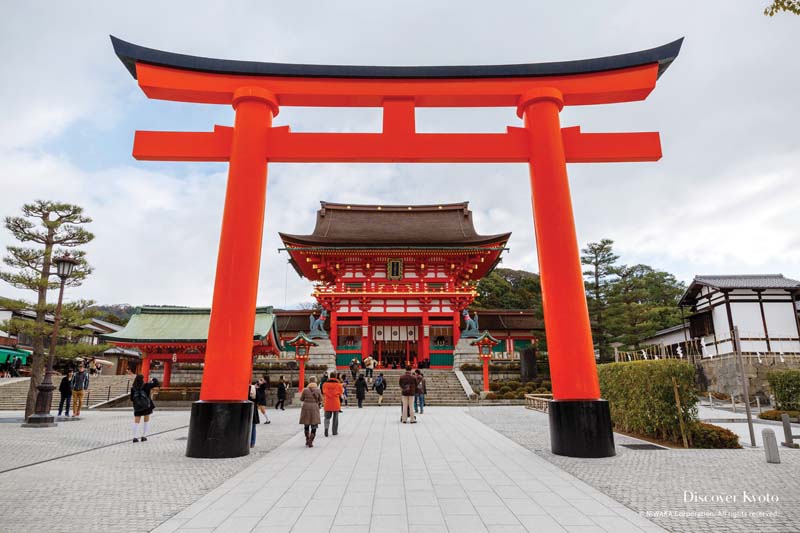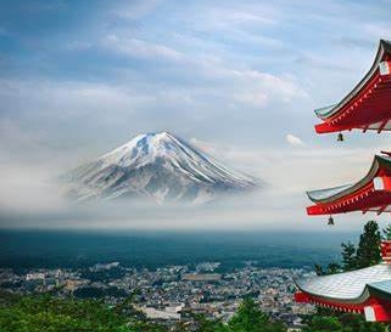Japan, a country where ancient traditions blend seamlessly with modern innovation, offers an unforgettable experience for any traveler. Whether you’re a fan of traditional culture, cutting-edge technology, or breathtaking natural beauty, Japan has something for everyone. From bustling cities to peaceful temples, here’s a guide to the top 10 must-visit destinations in Japan, showcasing its rich history, unique landscapes, and vibrant culture.
1. Mount Fuji
Mount Fuji is Japan’s tallest peak and one of the most iconic natural landmarks in the world. This perfectly symmetrical volcano, which is snow-capped for much of the year, offers stunning views from various vantage points, including the nearby Fuji Five Lakes region. Hiking Mount Fuji is a popular activity during the summer months, with climbers reaching the summit for a breathtaking sunrise. Whether you’re hiking, taking in the view, or visiting the surrounding areas, Mount Fuji offers a deeply spiritual and picturesque experience.
2. Kyoto’s Temples and Gardens
Kyoto, once the capital of Japan, is home to over 1,000 temples, shrines, and stunning Japanese gardens. The city is famous for its historical and cultural significance, and its temples offer a glimpse into Japan’s rich religious history. Notable sites include the Golden Pavilion (Kinkaku-ji), the Silver Pavilion (Ginkaku-ji), and the serene Kiyomizu-dera temple. Kyoto’s Zen gardens are also world-renowned for their beauty and tranquility. Exploring Kyoto allows visitors to step back in time and experience the essence of traditional Japan.
3. Tokyo Tower
Tokyo Tower, inspired by Paris’s Eiffel Tower, stands as one of Japan’s most recognizable landmarks. Located in the heart of Tokyo, the tower offers panoramic views of the sprawling metropolis. At night, the tower is illuminated, creating a dazzling spectacle. Whether you’re visiting for the view or to explore the nearby shops and restaurants, Tokyo Tower is a must-see for those who want to experience the energy and vibrancy of Japan’s capital.
4. Nara Park
Nara Park is a large public park in Nara, home to over 1,000 friendly, free-roaming deer that are considered sacred. The park also houses several historical landmarks, including the Todai-ji temple, which is home to the Great Buddha (Daibutsu), one of the largest bronze statues in the world. Walking through Nara Park allows visitors to experience the peaceful coexistence of nature and history while interacting with the gentle deer that roam the area.
5. Hiroshima Peace Memorial Park
The Hiroshima Peace Memorial Park is a poignant reminder of the devastation caused by the atomic bombing of Hiroshima in 1945. The park is home to the Atomic Bomb Dome, which remains as it was after the bomb exploded. The Hiroshima Peace Memorial Museum offers a moving and educational look at the events of the bombing and the lives affected by it. A visit to Hiroshima is a solemn yet essential experience for those interested in understanding Japan’s journey toward peace.
6. Osaka Castle
Osaka Castle is one of Japan’s most famous and historically significant landmarks. Originally constructed in the 16th century, the castle has been reconstructed several times, and today it stands as a symbol of Osaka’s cultural heritage. Visitors can explore the castle grounds, which include lush gardens and historical exhibits, and climb to the top of the tower for stunning views of the city. The castle is especially beautiful during cherry blossom season when the surrounding park is in full bloom.
7. Hakone Hot Springs
Hakone, located just outside of Tokyo, is famous for its natural hot springs, or onsen. The region is a popular destination for relaxation and rejuvenation, offering numerous ryokan (traditional inns) where visitors can enjoy an authentic onsen experience. In addition to the hot springs, Hakone offers breathtaking views of Mount Fuji, art museums, and scenic hikes. The Hakone Open-Air Museum is also a unique attraction, featuring sculptures by famous artists like Picasso and Henry Moore.
8. Akihabara, Tokyo
Akihabara, located in central Tokyo, is the epicenter of Japan’s pop culture, electronics, and gaming scene. Known as “Electric Town,” it is packed with electronics stores, anime shops, and gaming arcades. Visitors can explore multiple floors of gadgets, video games, and anime merchandise. For fans of Japanese pop culture, Akihabara is a paradise, offering everything from maid cafes to specialized gaming shops. It’s an energetic district where technology and entertainment meet in a unique blend.
9. Okinawa Islands
Okinawa, an island chain located in the southernmost part of Japan, is known for its tropical climate, beautiful beaches, and distinct culture. Okinawa offers a laid-back atmosphere with clear turquoise waters, making it a perfect destination for water sports such as snorkeling, scuba diving, and swimming. Visitors can also explore the Shurijo Castle, a UNESCO World Heritage site, and learn about the island’s unique history and traditions. Okinawa provides a relaxing escape with a different pace from the rest of Japan.
10. The Ghibli Museum, Mitaka
For fans of Studio Ghibli’s iconic films, the Ghibli Museum in Mitaka, Tokyo, is a dream come true. This whimsical museum is dedicated to the works of Hayao Miyazaki and the entire Ghibli animation studio. Visitors can explore exhibits showcasing characters, artwork, and animation techniques, as well as enjoy short films exclusive to the museum. The museum’s design itself is inspired by the fantastical worlds seen in Ghibli films, making it a magical place for children and adults alike.
Japan offers an extraordinary blend of ancient history, modern innovation, and natural beauty. From the towering peaks of Mount Fuji to the tranquil gardens of Kyoto, from the bustling streets of Tokyo to the serene islands of Okinawa, Japan provides a diverse range of experiences. Each destination invites you to explore its unique charm and culture, making Japan an unforgettable country to visit.





